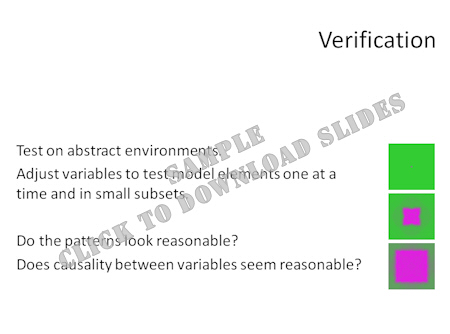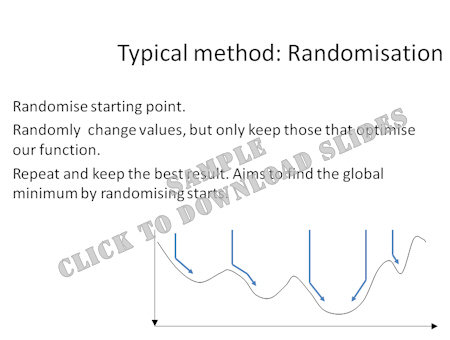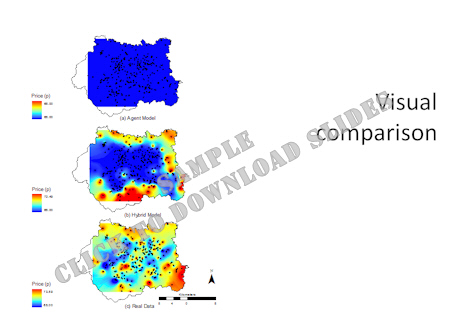Modelling: The Modelling Process
[Part 10 of 12]
In this part we'll look at some generic issues around modelling, examining the steps a fully formed model needs to go through.
Firstly we'll look at the modelling processes in general. How do we build a convincing and reliable model of the real world?
Modelling overview (powerpoint)
Further info:
Papers:
Heppenstall, A.J., Evans, A.J. and Birkin, M.H. (2005) A Hybrid Multi-Agent/Spatial Interaction Model System for Petrol Price Setting Transactions in GIS, 9 (1), 35-51
Heppenstall, A.J., Evans, A.J. and Birkin, M.H. (2006) Using Hybrid Agent-Based Systems to Model Spatially-Influenced Retail Markets Journal of Artificial Societies and Social Simulation, 9, 3.
Having looked at setting up our model's general structure, how do we now ensure it matches the world as well as possible? We may need to calibrate our model, for which we generally use optimisation routines to find the best possible variable values to replicate reality.
Further info:
Online lecture on Spatial Microsimulation by Dimitris Ballas.
Another technique like AZP is GRASP (Greedy Randomised Adaptive Search Procedure). For more information on GRASP see Mauricio Resende's webpage. The algorithm proceeds by steepest descent (or some other greedy, i.e. irreversibly optimising, method), but at each step you randomly select from the best choices.
For more information on Simulated Annealing and some code, see
Skip Carter's webpage.
For more information on Genetic Programming see John Koza’s websites genetic-programming.com and genetic-programming.org.
You can see an example of the use of GAs in combat games at Brandeis University. It's a Tron bike game based on the arcade classic.
A great paper on optimising NetLogo models is Thiele et al.
Calibration (powerpoint)
Papers:
Ballas D. and Clarke G.P.(1999) Modelling the local impacts of national social policies: A Microsimulation Approach Paper presented at the 11th European colloquium on Theoretical and Quantitative Geography, Durham, UK, 3rd-7th September 1999.
Ballas D. and Clarke G.P. (2000) GIS and microsimulation for local labour market analysis Computers, Environment and Urban Systems, vol. 24, pp. 305-330.
Ballas D., Clarke G.P., and Turton, I. (1999) Exploring Microsimulation Methodologies for the Estimation of Household Attributes Paper presented at GeoComp99, Mary Washington College, Virginia, USA, 25th-28th July 1999
Holland, J.H. (1973) Genetic algorithms and the optimal allocation of trials (plus Erratum (1974)) SIAM Journal on Computing, 2(2), p.88-105.
Kirkpatrick, S., Gerlatt, C. D. Jr., and Vecchi, M.P. (1983) Optimization by Simulated Annealing, Science 220, 671-680.
Koza, J.R. (1989) Hierarchical genetic algorithms operating on populations of computer programs In Proceedings of the 11th International Joint Conference on Artificial Intelligence. San Mateo, CA: Morgan Kaufmann. Volume I. P.768-774.
Metropolis, N., Rosenbluth, A.W., Rosenbluth, M. N., Teller, A.H. and Teller, E. (1958) Equations of State Calculations by Fast Computing Machines J. Chem. Phys. 21, 1087-1092.
Openshaw, S. (1977) A geographical solution to scale and aggregation problems in region-building, partitioning, and spatial modelling Transactions of the Institute of British Geographers 2, p.459-72.
Openshaw, S. (1978) An empirical study of some zone design criteria Environment and Planning A 10, p.781-794.
Openshaw, S. (1978) An optimal zoning approach to the study of spatially aggregated data In Masser I, Brown PJB (eds) ‘Spatial representation and spatial interaction’ Boston MA, Martinus Nijhoff, p.95-113.
Jan C. Thiele, Winfried Kurth and Volker Grimm (2014) Facilitating Parameter Estimation and Sensitivity Analysis of Agent-Based Models: A Cookbook Using NetLogo and R Journal of Artificial Societies and Social Simulation 17 (3) 11
Finally, having build and calibrated our model, we generally need to test how well it does replicating the world before we can use it for exploration or prediction: we need to validate it.
Further info:
You can experiment with Kappa, on David Choy's webpage.
ArcGIS software for Kappa
R Visualizing Catagorical Data vcd package and documentation.
Papers:
Black, William R. (1991) A note on the use of correlation coefficients for assessing goodness-of-fit in spatial interaction models Transportation, 18 (3), 199-206.
Gehlke, C.E. and Biehl, H. (1934) Certain effects of grouping upon the size of correlation coefficients in census tract material Journal of the American Statistical Association, 29 Supplement, 169-170.
Hagen-Zanker, Alex (2009) An improved Fuzzy Kappa statistic that accounts for spatial autocorrelation International Journal of Geographical Information Science, 23 (1), 61-73
Heppenstall, A.J., Evans, A.J. and Birkin, M.H. (2003) Application of a hybrid multi-agent model to petrol prices (Word doc) Proceedings of the Regional Science Association International: British and Irish Section, 33rd Annual Conference. the model appears to capture the urban-rural change well.
Knudsen D.C. and Fotheringham A.S. (1986) Matrix Comparison, Goodness-of-Fit, and Spatial Interaction Modeling International Regional Science Review 10: 127–147.
Landis, J.R. and Koch, G.G. (1977) The measurement of observer agreement for categorical data. Biometrics, 33, 159-174.
Malleson, N. (2010) Agent-Based Modelling of Burglary School of Geography, University of Leeds, Leeds,
Monserud, Robert A. and Leemans, Rik (1992) Comparing global vegetation maps with the Kappa statistic Ecological Modelling, 62 (4), 275-293
Robinson, W.S. (1950) Ecological correlations and the behaviour of individuals American Sociological Review, 15, 351-357.
Sousa, S., Caeiro, S. and Painho, M. (2002) Assessment of Map Similarity of Categorical Maps Using Kappa Statistics ISEGI, Lisbon.


